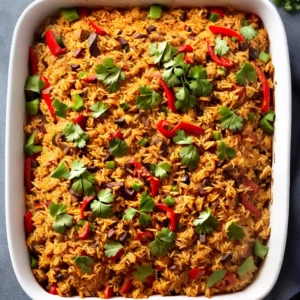How Many Grams in a Teaspoon
Are you wondering how to convert teaspoons to grams? Look no further! In this guide, I’ll walk you through the conversion process for different ingredients commonly used in cooking and baking. Say goodbye to guesswork in your recipes and achieve precise measurements every time.
How Many Grams in a Teaspoon – Key Takeaways:
- Grams measure mass, while teaspoons measure volume. The exact conversion between grams and teaspoons depends on the density of the ingredient being measured.
- Conversion charts are available for over 60 common cooking ingredients to assist with accurate measurement conversions.
- Water, granulated sugar, salt, flour, and other common ingredients each have specific conversion ratios from teaspoons to grams.
- Consider using a digital kitchen scale for precise measurements.
- Learn how to convert teaspoons to other common measurement units, such as tablespoons, cups, fluid ounces, gallons, liters, milliliters, and cubic meters.
In this comprehensive measurement conversion guide, you’ll find all the information you need to confidently convert teaspoons to grams for various kitchen ingredients. Say goodbye to imprecise measurements and elevate your cooking and baking with accurate conversions.
Understanding the Relationship Between Grams and Teaspoons
To determine the number of grams in a teaspoon, we need to consider the density of the ingredient. Let’s explore how this relationship works.
Grams and teaspoons are both units of measurement, but they measure different properties. Grams measure mass, which refers to the amount of matter in an object. Teaspoons, on the other hand, measure volume, which refers to the amount of space occupied by a substance.
Because different ingredients have varying densities, the number of grams in a teaspoon can vary. For example, a teaspoon of water will weigh differently than a teaspoon of granulated sugar. Water has a density of 1 gram per milliliter, so a teaspoon of water weighs approximately 4.93 grams. Granulated sugar, on the other hand, has a density of 0.85 grams per milliliter, so a teaspoon of granulated sugar weighs approximately 4.20 grams.
| Ingredient | Density (gram per milliliter) | Grams in 1 Teaspoon |
|---|---|---|
| Water | 1.0 | 4.93 |
| Granulated Sugar | 0.85 | 4.20 |
When converting between grams and teaspoons, it’s important to use conversion charts that provide specific measurements for different ingredients. These charts take into account the density of each ingredient, ensuring accurate measurements in your recipes. Keep in mind that these conversions are based on level teaspoons, so make sure to measure ingredients accurately for consistent results.

- Grams measure mass, while teaspoons measure volume.
- The number of grams in a teaspoon varies depending on the density of the ingredient.
- Conversion charts provide specific measurements for different ingredients.
- Accurate measurements are crucial for achieving consistent results in your recipes.
Conversion Chart for Common Cooking Ingredients
To make your cooking experience easier, here’s a comprehensive conversion chart that lists the number of grams in a teaspoon for a wide range of commonly used cooking ingredients:
| Ingredient | Grams in 1 Teaspoon |
|---|---|
| Salt | 4.8 grams |
| Sugar, granulated | 4.2 grams |
| Flour, all-purpose | 2.6 grams |
| Baking powder | 4.8 grams |
| Baking soda | 4.2 grams |
| Cocoa powder | 2.8 grams |
| Vanilla extract | 4.2 grams |
| Olive oil | 4.9 grams |
| Milk, whole | 4.9 grams |
Keep in mind that these conversions are based on level teaspoons. For ingredients with different densities or levels of compactness, the weight per teaspoon may vary slightly. It’s always a good idea to use a kitchen scale for greater accuracy, especially when dealing with critical measurements in baking.
Having this conversion chart at hand will save you time and ensure that your recipes turn out just right. No more guessing or estimating, simply refer to this chart to achieve precise measurements in your culinary creations.

Let’s start with the simplest conversion: water. One teaspoon of water weighs approximately 4.93 grams. Since water has a relatively consistent density, this conversion can be used as a benchmark when converting other ingredients from teaspoons to grams. Keep in mind that this conversion is based on a level teaspoon, so be sure to measure accurately to achieve the most precise results.
When it comes to cooking and baking, accurate measurements are essential for achieving the desired outcome. Whether you’re following a recipe or creating your own, knowing how to convert teaspoons to grams can help you achieve the perfect balance of flavors and textures in your dishes.
Here is a table that demonstrates the conversion of water from teaspoons to grams:
| Teaspoons | Grams |
|---|---|
| 1 | 4.93 |
| 2 | 9.86 |
| 3 | 14.79 |
| 4 | 19.72 |
Remember, this conversion chart is specific to water and may not apply to other ingredients. For accurate measurements of different ingredients, refer to the provided conversion chart or consult a reliable source.
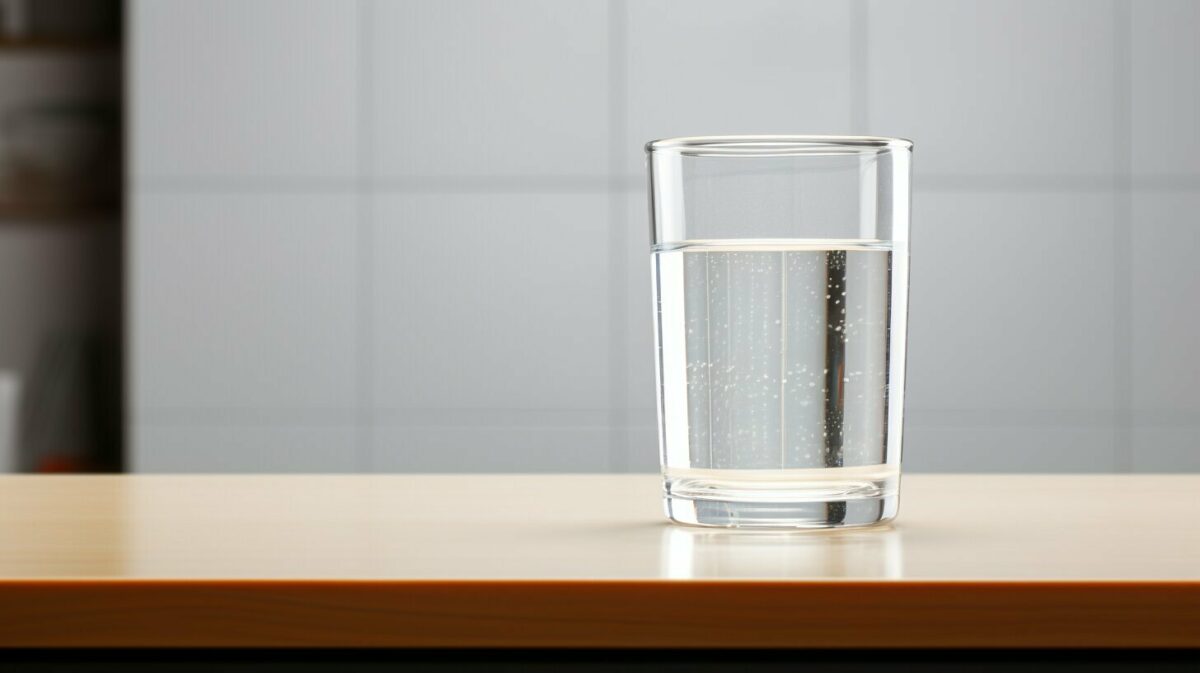
Converting between teaspoons and grams can take the guesswork out of your kitchen measurements. With the help of conversion charts and a digital kitchen scale, you can achieve precise and consistent results in your cooking and baking endeavors. So, next time you’re following a recipe or experimenting with your own creations, feel confident in your ability to convert teaspoons to grams and create delicious dishes with ease.
Converting Granulated Sugar from Teaspoons to Grams
When it comes to granulated sugar, one teaspoon weighs approximately 4.20 grams. This conversion is based on a level teaspoon, ensuring accurate measurements for your recipes. To achieve the perfect sweetness in your baked goods or beverages, it is important to have the correct measurements of granulated sugar.
Granulated sugar is a common ingredient in baking, and precision is key to achieve the desired results. Whether you’re making cookies, cakes, or a simple syrup, converting teaspoons to grams will help you maintain consistency and accuracy in your measurements. Utilizing a conversion chart for granulated sugar can simplify the process and make your culinary creations a success.
| Teaspoons | Grams |
|---|---|
| 1 | 4.20 |
| 2 | 8.40 |
| 3 | 12.60 |
| 4 | 16.80 |
Remember, the density of other ingredients may differ, so it’s important to consult a conversion chart specific to the ingredient you’re working with. By understanding the grams-to-teaspoons ratio for granulated sugar, you can confidently measure the right amount for your recipes, resulting in delicious treats every time.
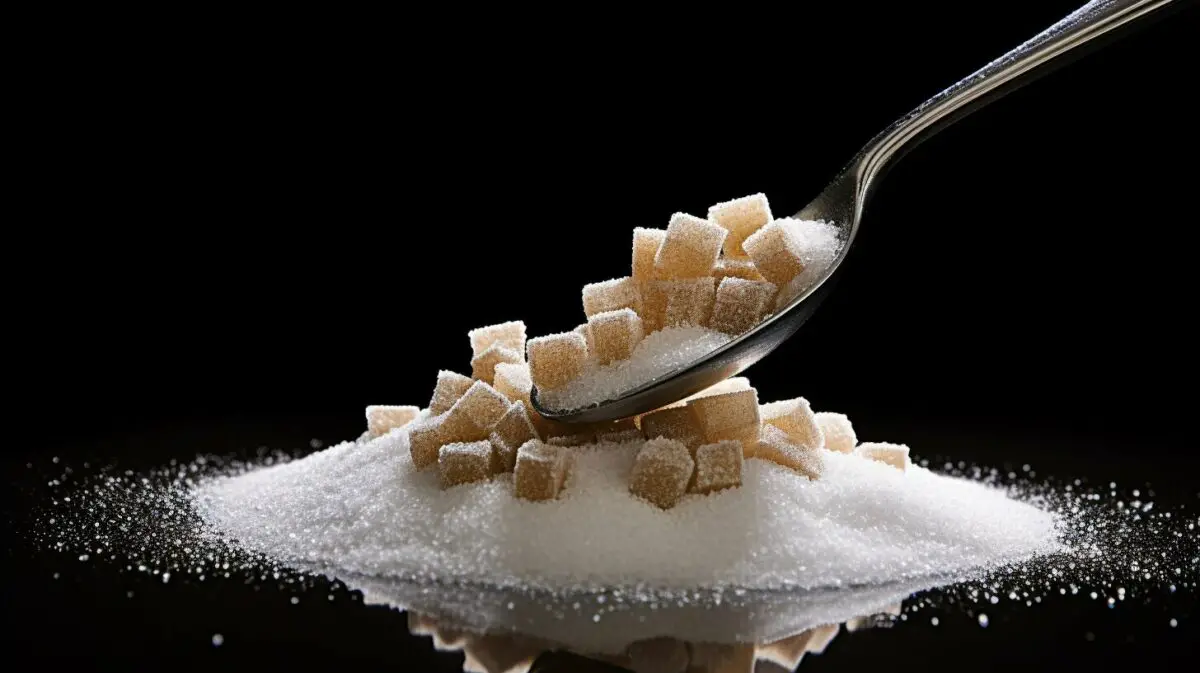
- Use a flat utensil, such as a knife or a straight-edged spatula, to level the granulated sugar in the teaspoon for accurate measurements.
- When measuring larger quantities of granulated sugar, use a digital kitchen scale for precise measurements.
- For recipes that require a specific weight of granulated sugar, it’s always best to rely on grams rather than teaspoons to achieve the desired outcome.
- Experiment with different levels of sweetness in your recipes by adjusting the amount of granulated sugar. Keep track of the measurements and their corresponding taste to create your own unique flavor profiles.
Now that you have the conversion for granulated sugar, you can confidently bake and cook with precise measurements. Enjoy the delightful sweetness of your favorite treats, knowing that you’ve measured each ingredient accurately.
Converting Salt from Teaspoons to Grams
If you’re wondering how much salt is in a teaspoon, it weighs approximately 5.92 grams. Understanding this conversion is essential to ensure the right amount of salt in your recipes. Whether you’re cooking a savory dish or baking bread, having accurate measurements of salt can make a significant difference in the final outcome.
However, it’s important to note that the measurement can vary depending on factors such as the size of the salt crystals and the packing density. To get precise measurements, it’s advisable to use a kitchen scale. This way, you can ensure that your recipes have the perfect balance of flavors, enhancing your culinary creations.
| Teaspoons | Grams |
|---|---|
| 1 | 5.92 |
| 2 | 11.84 |
| 3 | 17.76 |
Keep in mind that this conversion is based on level teaspoons. If the salt is packed or heaped, the weight per teaspoon may differ. It’s always a good idea to use a spoon to level off the excess salt when measuring.
Now that you know how many grams are in a teaspoon of salt, you can confidently season your dishes with precision. Remember that salt is a powerful ingredient that can elevate the flavors of your meals, so understanding the correct measurements is crucial for achieving the desired taste. Happy cooking!

Measuring flour accurately is crucial for successful baking. One teaspoon of flour weighs approximately 2.42 grams. However, it’s important to note that the exact weight can vary depending on factors such as the brand of flour and how it is packed into the spoon. To ensure the most precise measurement, it is recommended to use a kitchen scale for weighing flour. Using a scale allows for greater accuracy and consistency in your recipes.
When converting teaspoons of flour to grams, it’s helpful to refer to a conversion chart or table. Here is an example of a conversion table for flour:
| Teaspoons of Flour | Grams |
|---|---|
| 1 | 2.42 |
| 2 | 4.84 |
| 3 | 7.26 |
| 4 | 9.68 |
| 5 | 12.10 |
Remember that these measurements are based on level teaspoons, so be sure to measure your flour accurately. The consistency of your baked goods can greatly be influenced by the precise amount of flour used. Using a scale and referring to a conversion table can help you achieve the desired results in your recipes.
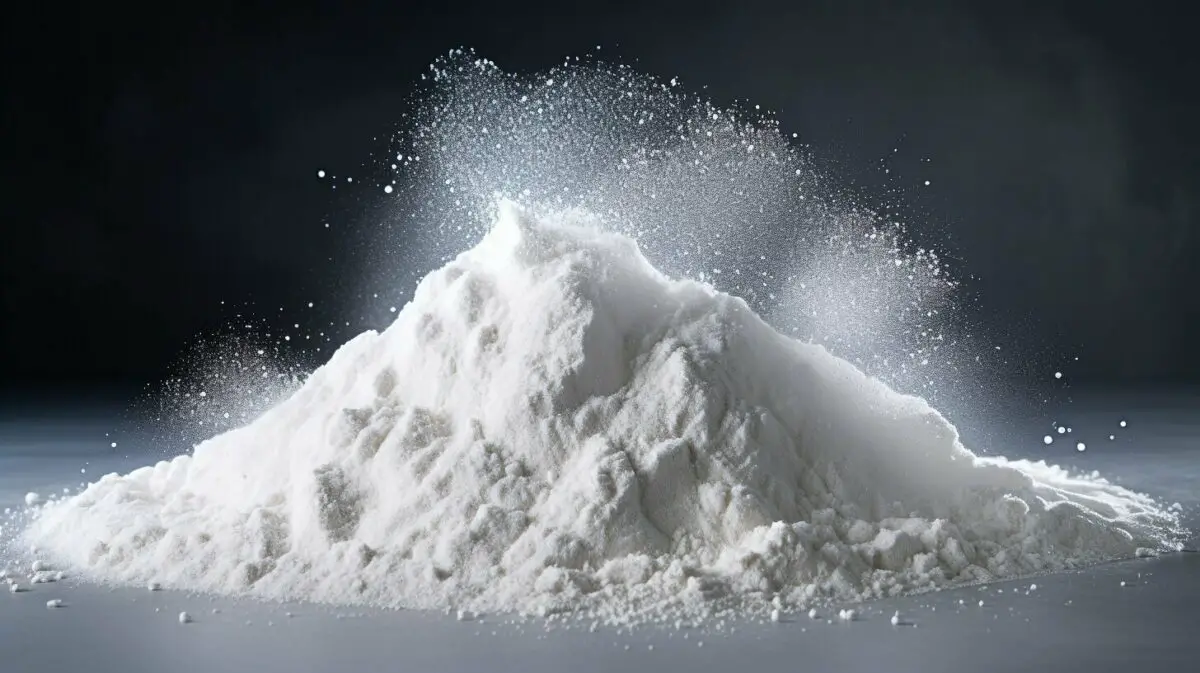
Converting teaspoons of flour to grams can be a helpful tool for bakers who want to be precise in their measurements. By understanding the weight of flour per teaspoon and using conversion charts, you can confidently follow recipes and achieve the desired texture and consistency in your baked goods.
Converting Other Common Ingredients
Beyond water, sugar, salt, and flour, there are numerous other ingredients you may encounter in your recipes. Here’s a breakdown of the conversions for several common ingredients:
| Ingredient | Teaspoons (tsp) to Grams (g) |
|---|---|
| Cocoa Powder | 1 tsp = 2.8 g |
| Baking Powder | 1 tsp = 4.8 g |
| Cornstarch | 1 tsp = 3.6 g |
| Butter | 1 tsp = 5.7 g |
| Honey | 1 tsp = 7.1 g |
These conversions can help ensure that your measurements are accurate and consistent, allowing you to achieve the desired results in your recipes. Remember, density plays a significant role in these conversions, so it’s essential to use level teaspoons for the most precise measurements.
“Accurate measurements are the key to cooking success.” – Unknown
By understanding the conversions for common ingredients, you can confidently explore new recipes and experiment with your favorite dishes. Whether you’re baking a cake or cooking a savory dish, knowing how to convert teaspoons to grams will help you achieve the perfect balance of flavors and textures. So, grab your measuring spoons and let’s get cooking!

If you’re accustomed to the metric system and prefer to use grams as your primary unit of measurement, you can easily convert teaspoons to grams using the same principles. The metric system provides a standardized measurement system used in many countries, making it a convenient option for precise cooking and baking.
To convert teaspoons to grams within the metric system, you’ll need to consider the density of the ingredient being measured. As grams measure mass and teaspoons measure volume, the conversion will vary depending on the specific ingredient.
For example, 1 teaspoon of water weighs approximately 4.93 grams, while 1 teaspoon of granulated sugar weighs approximately 4.20 grams. To convert other ingredients, you can refer to conversion charts that provide accurate measurements for over 60 common cooking ingredients.
| Ingredient | Teaspoons to Grams |
|---|---|
| Water | 1 tsp = 4.93 grams |
| Granulated Sugar | 1 tsp = 4.20 grams |
| Salt | 1 tsp = 6 grams |
| Flour | 1 tsp = 4 grams |
Remember, these conversions are based on level teaspoons and provide a general guideline for measurement. It’s always recommended to use a kitchen scale for more precise and consistent results. By understanding the principles of converting teaspoons to grams within the metric system, you’ll have the flexibility to adapt recipes and achieve accurate measurements in metric units.
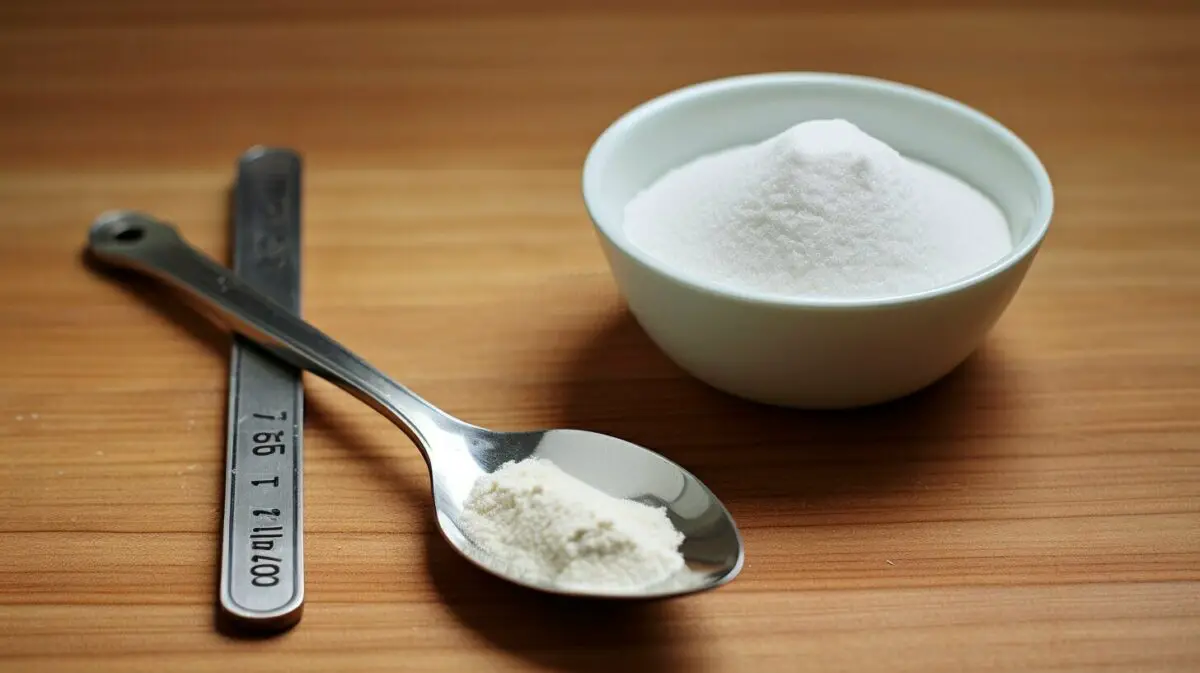
If you’re serious about achieving precise measurements in the kitchen, investing in a digital kitchen scale can be a game-changer. While conversion charts provide approximate measurements, using a scale can give you the exact weight in grams, ensuring consistency and accuracy in your recipes.
A digital kitchen scale allows you to weigh your ingredients directly, eliminating the need for conversion calculations. Simply place your container on the scale, reset it to zero, and then add your ingredient until you reach the desired weight. This method not only saves time but also guarantees precise measurements every time.
Using a scale is particularly beneficial when working with ingredients of different densities. For example, a cup of flour can vary in weight depending on how it’s packed. By using a scale, you can ensure that you’re using the exact amount of flour required, resulting in perfectly textured baked goods.
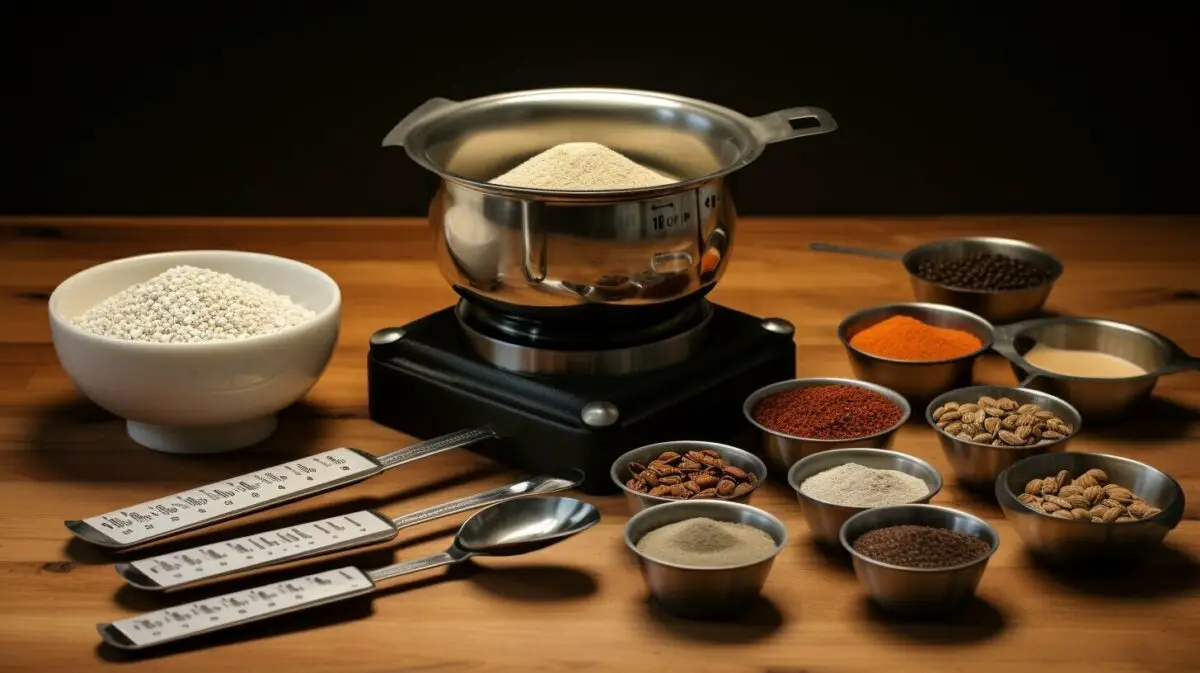
Whether you’re a novice cook or an experienced baker, a digital kitchen scale is a valuable tool that can elevate your culinary creations. From precise measurements to better consistency, it’s an investment that will enhance your cooking and baking endeavors. So, why not take the guesswork out of your recipes and start using a scale today?
Converting Between Teaspoons and Other Measurement Units
Being able to convert between teaspoons and other measurement units will give you the flexibility to adapt any recipe to your preferred measuring system. Whether you’re following a recipe that uses tablespoons, cups, fluid ounces, gallons, liters, milliliters, or cubic meters, understanding the conversion rates will ensure accurate measurements and successful culinary creations.
To help you easily convert between teaspoons and other measurement units, here’s a handy table:
| Measurement Unit | Conversion |
|---|---|
| 1 teaspoon | 1/3 tablespoon |
| 1 tablespoon | 3 teaspoons |
| 1 cup | 48 teaspoons |
| 1 fluid ounce | 6 teaspoons |
| 1 gallon | 768 teaspoons |
| 1 liter | 202.88 teaspoons |
| 1 milliliter | 0.2029 teaspoons |
| 1 cubic meter | 202,884.14 teaspoons |
Remember, these conversion rates are approximate and can vary slightly depending on factors such as the ingredient’s density and measuring precision. When converting between different measurement units, it’s always best to refer to a reliable conversion chart or use a digital kitchen scale for more accurate measurements.
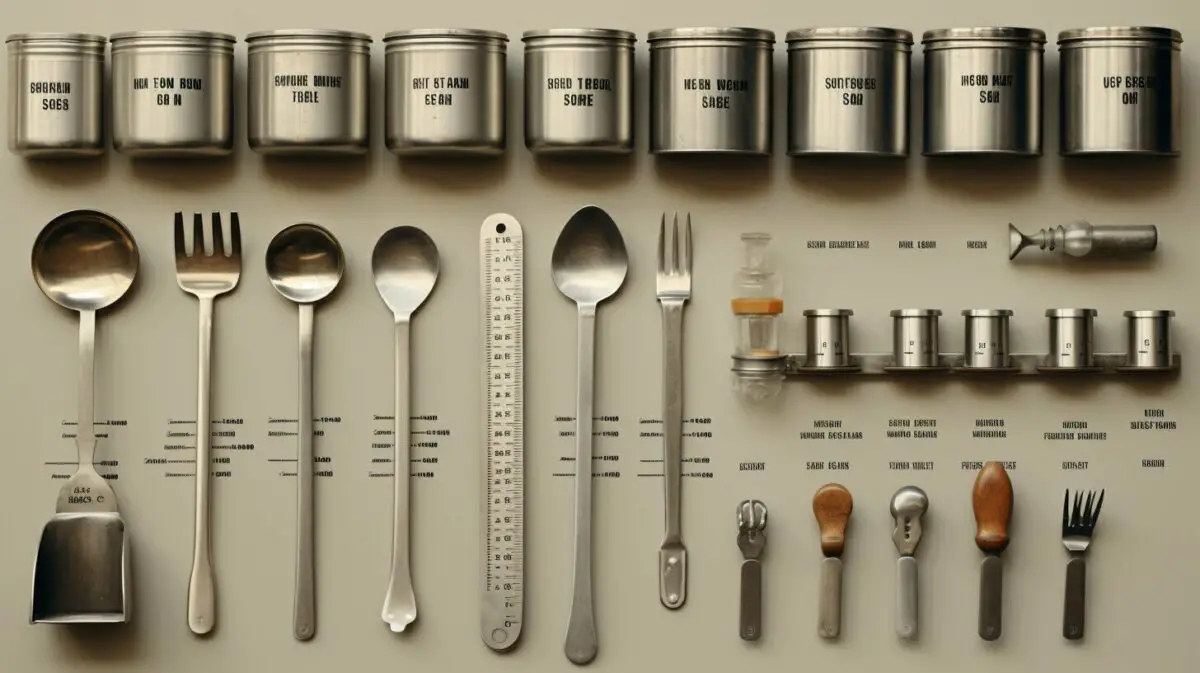
With this understanding of how to convert between teaspoons and other measurement units, you can confidently experiment with recipes from different regions and adapt them to your preferred measuring system. Whether you’re baking a cake, cooking a savory dish, or mixing cocktails, accurate measurements will ensure consistent and delicious results every time.
Calculating Conversions: Ratios and Proportions
If you want to delve deeper into the world of measurement conversions, understanding ratios and proportions is key. These mathematical concepts can help you determine the correct ratios between grams and teaspoons for different ingredients. By applying ratios and proportions, you’ll be able to figure out customized conversions for any recipe.
Let’s explore how to calculate conversions using ratios. A ratio is a comparison between two quantities and can be expressed in different formats, such as 1:2, 1/2, or 0.5. When converting grams to teaspoons, you’ll need to establish the ratio between the two units of measurement. For instance, if you know that 1 teaspoon of water weighs approximately 4.93 grams, you can set up the following ratio:
| 1 teaspoon | 4.93 grams |
|---|
To determine the number of grams in a given number of teaspoons, you can use proportions. Proportions are equations that express equality between two ratios. For example, if you have 2 teaspoons of water and want to know the equivalent grams, you can set up the following proportion:
| 1 teaspoon | 4.93 grams |
|---|---|
| 2 teaspoons | x grams |
By cross-multiplying and solving for x, you’ll find that 2 teaspoons of water is equal to approximately 9.86 grams.

- Ratios and proportions are essential for calculating conversions between grams and teaspoons.
- A ratio compares two quantities, and proportions establish equality between two ratios.
- By setting up proportions and cross-multiplying, you can determine the grams equivalent of a given number of teaspoons.
- Understanding ratios and proportions empowers you to figure out customized conversions and achieve precise measurements in your recipes.
Conclusion – How Many Grams in a Teaspoon
Converting between grams and teaspoons is an essential skill for any home cook or baker. With accurate measurements, you can unlock a world of precise and delicious recipes. When converting between these units, it is crucial to consider the density of the ingredient being measured. Grams measure mass, while teaspoons measure volume. The exact conversion will vary depending on the ingredient.
In this comprehensive measurement conversion guide, you have learned the specific conversions for various kitchen ingredients. From water and sugar to salt and flour, you now have the tools to achieve precise measurements every time you step into the kitchen.
By using the provided conversion charts and understanding the principles of ratios and proportions, you can confidently calculate conversions for customized measurements. Remember, a digital kitchen scale can also be a valuable tool in achieving consistent results.
So, say goodbye to guesswork in your recipes and embrace the world of precise measurements. Whether you’re a seasoned chef or a novice in the kitchen, accurate measurements will ensure that your dishes turn out just the way you envision them. Happy cooking!
FAQ – How Many Grams in a Teaspoon
Q: How do I convert between grams and teaspoons?
A: When converting between grams and teaspoons, it is important to consider the density of the ingredient being measured. Grams are a unit of mass, while teaspoons are a unit of volume. The exact conversion will depend on the ingredient being measured. Conversion charts are provided for over 60 common cooking ingredients to help with measurement conversions.
Q: What is the relationship between grams and teaspoons?
A: Grams measure mass, while teaspoons measure volume. Therefore, the number of grams in a teaspoon can vary depending on the density of the ingredient being measured.
Q: Do you have a conversion chart for common cooking ingredients?
A: Yes, we provide a handy conversion chart for over 60 common cooking ingredients. From sugar and salt to flour and spices, you’ll have all the information you need to convert teaspoons to grams accurately.
Q: How do I convert teaspoons of water to grams?
A: 1 teaspoon of water weighs approximately 4.93 grams.
Q: How do I convert teaspoons of granulated sugar to grams?
A: 1 teaspoon of granulated sugar weighs approximately 4.20 grams.
Q: How do I convert teaspoons of salt to grams?
A: The conversion of teaspoons of salt to grams will depend on the type of salt being used. Please refer to the conversion chart for specific measurements.
Q: How do I convert teaspoons of flour to grams?
A: The conversion of teaspoons of flour to grams will depend on the type of flour being used. Please refer to the conversion chart for specific measurements.
Q: Are there conversions for other common ingredients?
A: Yes, we provide conversions for a wide range of commonly used ingredients. Please refer to the conversion chart for specific measurements.
Q: How do I convert teaspoons to grams within the metric system?
A: The metric system provides a standardized measurement system used in many countries. Please refer to the conversion chart for specific measurements within the metric system.
Q: Should I use a scale for accurate measurements?
A: While conversion charts provide approximate measurements, using a digital kitchen scale can give you precise and consistent results.
Q: How do I convert teaspoons to other measurement units?
A: If you need to convert teaspoons to other common units of measurement, such as tablespoons, cups, or fluid ounces, please refer to the conversion chart for specific measurements.
Q: How can I calculate conversions on my own?
A: Understanding the principles of ratios and proportions can empower you to calculate conversions for customized measurements. Learn how to determine the grams-to-teaspoons ratio for any ingredient.
Our Friends:
Related Recipes:
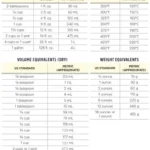 How Many Cups Are in a Liter: Unlocking the Mystery
How Many Cups Are in a Liter: Unlocking the Mystery
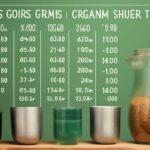 How Many Grams Are in an Ounce? (Perfect Measurement Conversion Guide)
How Many Grams Are in an Ounce? (Perfect Measurement Conversion Guide)
 How Many Grams Are in a Pound? (Measurement Conversion Guide)
How Many Grams Are in a Pound? (Measurement Conversion Guide)
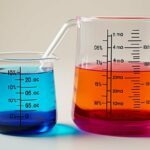 How Many Milliliters in an Ounce? (Perfect Measurement Conversion Guide)
How Many Milliliters in an Ounce? (Perfect Measurement Conversion Guide)
 How Many Grams Are in a Kilogram? (Perfect Measurement Conversion Guide)
How Many Grams Are in a Kilogram? (Perfect Measurement Conversion Guide)
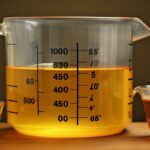 How Many Ounces Are in 750 ml? (Measurement Conversion Guide)
How Many Ounces Are in 750 ml? (Measurement Conversion Guide)
 How Many Milligrams Are in a Gram? (Perfect Measurement Conversion Guide)
How Many Milligrams Are in a Gram? (Perfect Measurement Conversion Guide)
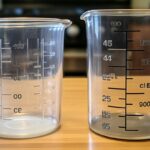 How Many Quarts in a Liter? (Perfect Measurement Conversion Guide)
How Many Quarts in a Liter? (Perfect Measurement Conversion Guide)



